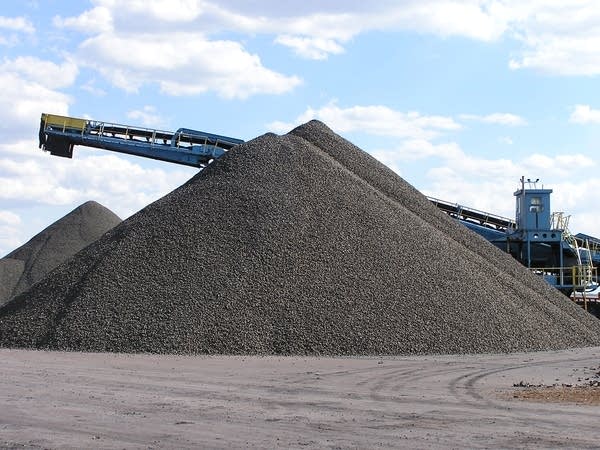State, U.S. Steel strike deal to expand production, clean up pollution at Iron Range plants
Go Deeper.
Create an account or log in to save stories.
Like this?
Thanks for liking this story! We have added it to a list of your favorite stories.

The state of Minnesota and U.S. Steel have reached an agreement that allows the company to expand production at one plant and clean up pollution at another plant on the Iron Range.
Minnesota Pollution Control Agency officials say the deal represents a good balance between protecting the environment and not interfering with economic development in a part of the state that needs jobs. Environmentalists and Indian tribes, however, oppose the deal because they don't trust the MPCA or U.S. Steel to do the right thing.
The deal between the state and U.S. Steel, called a schedule of compliance, is similar to a contract, and it doesn't allow for public input. It specifies actions the company will take at its Minntac plant — the behemoth of the Iron Range, near Mountain Iron — and the smaller Keetac plant, 30 miles to the west.
Ann Foss, manager of the MPCA's industrial division, said the agreement will solve several very difficult problems at once. She's pleased that U.S. Steel decided to take a comprehensive approach that looks at the company's entire system and focuses simultaneously on air and water.
Turn Up Your Support
MPR News helps you turn down the noise and build shared understanding. Turn up your support for this public resource and keep trusted journalism accessible to all.
"It's better for the environment and probably for them from a cost perspective to look at it holistically," Foss said.
Each plant has its own specific pollution problem. The U.S. Steel plant in Keewatin has a mercury problem, while the company's Minntac operation has a problem with sulfates in its wastewater. Both are substances the state has said it wants to reduce in the environment.
U.S. Steel officials said in a statement that the deal represents the company's commitment to environmental stewardship and will make its taconite plants leaders on pollution control.
The arrangement comes amid rising worldwide demand for iron to make steel. The expansion at the Keetac plant is expected to create 500 temporary construction jobs and 75 permanent jobs.
But the increased production will also send about 54 pounds of mercury into the air every year.
An organic form of mercury builds up in fish tissue. People who eat a lot of tainted fish can suffer from nerve damage and developmental problems.
The taconite industry has committed to reducing its mercury emissions 75 percent by 2025, part of a statewide effort by industry.
According to the agreement, U.S. Steel plans to install dry scrubbers and carbon-injection systems on the Keewatin stacks so contaminants are sent to a landfill instead of rivers and lakes.
SKEPTICISM TO DEAL
Members of environmental groups and Minnesota's Indian tribes are skeptical. They say there's no proof the scrubbers will work.
Kathryn Hoffman, an attorney for the Minnesota Center for Environmental Advocacy, said the state's plan to reduce mercury requires any new source — such as the Keetac expansion — to compensate for the added mercury with reductions elsewhere.
"Simply testing technology and hoping it will work is not an offset," Hoffman said. "An offset is an immediate reduction in the amount of mercury that's discharged or emitted, and that's the step that they should be taking."
MPCA officials say they're confident the scrubbers will work. If they do, the technology could probably be adapted to work at most if not all of the taconite plants on the Iron Range. And that would be a big deal, because taconite operations are the second-biggest source of mercury in Minnesota, after coal-fired power plants.
U.S. Steel also plans to address a sulfate problem at its Minntac plant.
Minntac's process water is so highly concentrated with minerals that it has not met its permit requirements for several years. The company plans to build a collection system to prevent mineral-laden water seeping out of its waste ponds from reaching nearby rivers.
Minnesota Indian tribes are concerned because sulfates and mercury make for a dangerous combination in the environment. Some research shows that when sulfates and mercury mingle in the same river or lake, more of the mercury ends up in fish. Tribal biologists and elders also believe the sulfate pollution from mine wastes by itself is to blame for the decline of once-plentiful wild rice beds.
Nancy Schuldt, water protection coordinator for the Fond du Lac Band of Lake Superior Chippewa, questions whether the Pollution Control Agency has the political will to make sure the collection system works.
"This was the first facility where the tribes made it clear to the PCA that we expected them to enforce the wild rice sulfate standard," Schuldt said. "And there is no evidence that the state is ever going to make them abide by that standard."
MPCA officials say new monitoring wells will help determine whether U.S. Steel meets standards or not.



